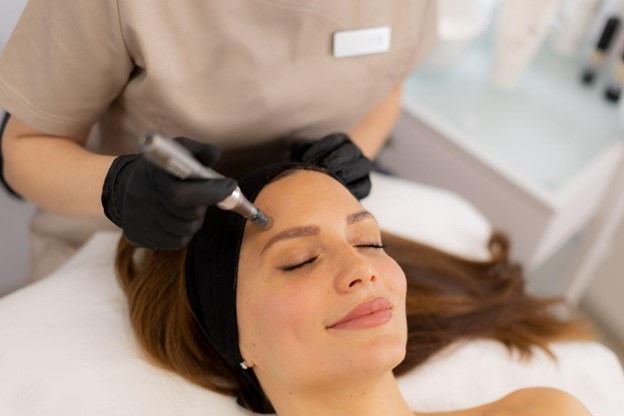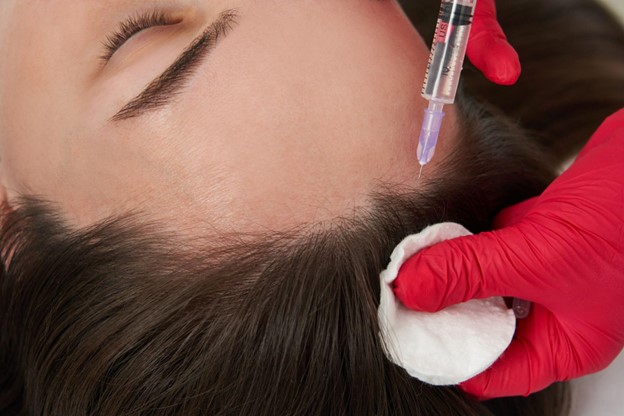Login Form
Registration
Profile Informations
Login Datas
or login
Mesotherapy: What Is It and How Does It Compare to Other Cosmetic Procedures?
Mesotherapy: What Is It and How Does It Compare to Other Cosmetic Procedures?
The world of aesthetic medicine continues to expand with innovative treatments that promise to enhance beauty without the need for surgery. Among these options, one procedure has gained significant attention for its versatility and minimal downtime. From addressing skin concerns to targeting stubborn fat deposits, this treatment offers a middle ground between topical products and invasive procedures.
Mesotherapy represents a unique approach to cosmetic enhancement that has captured the interest of both practitioners and patients seeking effective, non-surgical solutions. This technique combines the precision of targeted injections with carefully selected therapeutic compounds to address various aesthetic concerns. As more people seek alternatives to traditional cosmetic surgery, understanding what mesotherapy offers becomes increasingly essential for making informed decisions about aesthetic treatments.

What is Mesotherapy?
What is mesotherapy exactly? This minimally invasive cosmetic procedure involves injecting small amounts of customized solutions directly into the mesoderm, the middle layer of skin. The treatment was initially developed in France during the 1950s by Dr. Michel Pistor for pain management, but has since evolved into a popular aesthetic treatment worldwide.
The procedure uses wonderful needles to deliver a cocktail of vitamins, minerals, amino acids, enzymes, and other therapeutic substances directly into the target area. What is mesotherapy able to treat? The versatility of this technique allows practitioners to address multiple concerns, from facial rejuvenation to body contouring and hair restoration. The growing popularity of mesotherapy stems from its ability to provide noticeable results with minimal downtime compared to more invasive procedures.
How Does Mesotherapy Work?
The science behind mesotherapy lies in its targeted delivery system. By injecting therapeutic compounds directly into the mesoderm, the treatment bypasses the digestive system and delivers nutrients exactly where they are needed. This direct approach allows for higher concentrations of active ingredients to reach the treatment area compared to topical applications or oral supplements.
During a typical session, practitioners use specialized techniques to inject the customized solution at specific depths and intervals. The needle depth usually ranges from 1 to 4 millimeters, depending on the treatment area and desired results. The injection pattern varies based on the specific concern being addressed, with some areas requiring more concentrated treatment than others.
Common Treatment Areas
Mesotherapy can be applied to various parts of the body, with the most popular treatment areas including:
- Face and neck: Targeting fine lines, wrinkles, skin texture, and overall rejuvenation
- Scalp: Addressing hair thinning and promoting hair growth
- Body: Focusing on cellulite reduction, fat reduction, and skin tightening
Mesotherapy for Different Purposes
The versatility of mesotherapy allows practitioners to customize treatments for various aesthetic concerns and body areas.
Skin Rejuvenation
Facial mesotherapy focuses on improving skin quality, texture, and appearance. The treatment cocktail typically includes hyaluronic acid, vitamins C and E, antioxidants, and peptides that work together to stimulate collagen production and improve skin hydration. This approach helps address signs of aging, uneven skin tone, and loss of firmness without requiring surgical intervention.
Fat Reduction and Body Contouring
Body mesotherapy targets localized fat deposits and cellulite using compounds like phosphatidylcholine and deoxycholate. These substances help break down fat cells and improve lymphatic drainage. While not a weight-loss solution, this application can help contour specific body areas that are resistant to diet and exercise.

Hair Restoration
Scalp mesotherapy involves injecting nutrient-rich solutions containing vitamins, minerals, and growth factors directly into the scalp. This treatment aims to improve blood circulation, strengthen hair follicles, and promote healthier hair growth. The approach is particularly popular among individuals experiencing early stages of hair thinning.
Mesotherapy Before and After: What Results Can You Expect?
Understanding mesotherapy before and after expectations helps set realistic goals for treatment outcomes. The results vary significantly based on the treatment area, individual skin condition, and the specific concerns being addressed.
What to Expect Before Treatment
Before beginning mesotherapy, practitioners typically conduct a thorough consultation to assess skin condition, medical history, and treatment goals. Pre-treatment preparation may include avoiding certain medications, alcohol, and excessive sun exposure. The skin should be clean and free from makeup or lotions on the treatment day.
What to Expect After Treatment
Post-treatment effects are generally mild and temporary. Common immediate responses include:
- Minor swelling and redness: Usually subsides within 24-48 hours
- Small injection marks: Typically disappear within a few days
- Mild tenderness: Can last 1-2 days in the treated area
Real Patient Experiences
Mesotherapy before and after results typically become visible gradually over several weeks. Most patients report improvements in skin texture, hydration, and overall appearance after completing a series of treatments. The timeline for visible results varies, with some noticing changes after the first session while others see optimal results after completing the recommended treatment series.

Benefits of Mesotherapy
The advantages of mesotherapy extend beyond its versatility in treating various concerns:
- Minimal downtime: Most patients can return to normal activities immediately after treatment
- Customizable treatments: Solutions can be tailored to individual skin needs and concerns
- Natural-looking results: Gradual improvements appear more natural than dramatic surgical changes
- Non-surgical approach: Avoids risks associated with general anesthesia and surgical procedures
- Relatively quick sessions: Most treatments take 30-60 minutes to complete
Risks and Side Effects
While mesotherapy is generally considered safe when performed by qualified practitioners, understanding potential complications helps patients make informed decisions.
Common Side Effects
While generally well-tolerated, mesotherapy can cause some temporary side effects:
- Bruising and swelling at injection sites
- Temporary skin sensitivity
- Minor pain or discomfort during treatment
- Rare allergic reactions to injected substances
Serious Complications
Though uncommon, more serious complications can occur, particularly when inexperienced practitioners perform treatment:
- Infection at injection sites
- Scarring or skin discoloration
- Granuloma formation
- Asymmetric results
Minimizing Risks
Choosing qualified practitioners and following proper aftercare instructions significantly reduces the risk of complications. Patients should research their provider's credentials, experience, and safety protocols before proceeding with treatment.
Comparison with Other Cosmetic Procedures
Understanding how mesotherapy differs from other popular aesthetic treatments helps determine the most suitable option for individual needs.
Mesotherapy vs. Botox and Fillers
Unlike Botox, which temporarily paralyzes muscles, or dermal fillers that add volume, mesotherapy works by nourishing the skin from within. While Botox and fillers provide more immediate, dramatic results, mesotherapy offers gradual, natural-looking improvements in overall skin quality.
Mesotherapy vs. Chemical Peels
Chemical peels work by removing the outer layers of skin to reveal fresher skin beneath, while mesotherapy delivers nutrients directly into the skin. Peels often require more downtime and can cause significant peeling, whereas mesotherapy typically involves minimal recovery time.
Mesotherapy vs. Surgical Procedures
Compared to surgical options like facelifts or liposuction, mesotherapy offers a less invasive alternative with lower risks and costs. However, surgical procedures typically provide more dramatic and longer-lasting results, making them more suitable for significant aesthetic concerns.
Should You Try Mesotherapy?
Mesotherapy presents an appealing option for individuals seeking aesthetic improvements without committing to surgical procedures. The treatment works best for people with realistic expectations who understand that results develop gradually over time. Ideal candidates typically have mild to moderate aesthetic concerns and prefer subtle, natural-looking improvements.
The decision to pursue mesotherapy should be based on individual goals, budget, and risk tolerance. While the treatment offers numerous benefits, including minimal downtime and customizable solutions, it may not be suitable for everyone. Consulting with qualified practitioners helps determine whether this approach aligns with specific aesthetic goals and expectations.
Success with mesotherapy depends heavily on choosing experienced practitioners who understand proper injection techniques, solution selection, and safety protocols. When performed correctly, this versatile treatment can provide satisfying results for various aesthetic concerns, making it a valuable addition to the modern cosmetic treatment landscape.


